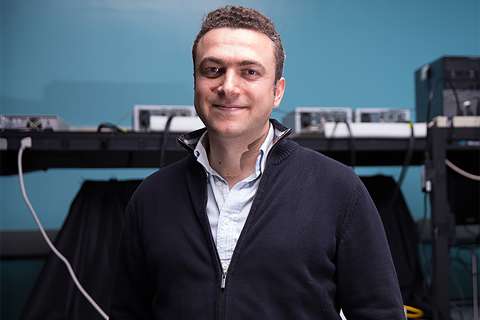FINDINGS
Melanoma, a relatively rare but deadly skin cancer, has been shown to switch differentiation states — that is, to regress to an earlier stage of development — which can lead it to become resistant to treatment. Now, UCLA researchers have found that melanomas can be divided into four distinct subtypes according to their stages of differentiation. Cell subtypes that de-differentiated — meaning that they reverted back to a less-mature cell — showed sensitivity to a type of self-inflicted cell death called ferroptosis.
The research also showed that certain subtypes of melanoma cells could be successfully treated using multiple cancer therapies in combination with ferroptosis-inducing drugs.
BACKGROUND
Melanoma arises from melanocytes, cells that produce pigments. Although targeted therapies and a greater understanding of cancer immunology have significantly improved survival, many patients either relapse or do not respond to treatment.
METHOD
The UCLA team, led by Dr. Thomas Graeber, analyzed the gene expressions of melanoma cells and compared them to information in public genetics databases to identify the four different subtypes of melanoma with different drug sensitivities. The team organized the melanoma cells according to characteristic patterns of genes they had turned on. Comparing the gene expression patterns to data from stem cells induced to differentiate to melanocytes, they discovered that melanomas can be found in four different differentiation states.
“This refined characterization improves our understanding of the progressive changes that occur in melanoma cells during dedifferentiation, which can help develop better strategies to target this form of therapy resistance,” said Jennifer Tsoi, who was a member of the research team as a UCLA graduate student and now is a postdoctoral fellow at UCLA.
The investigators then searched pharmacogenomics databases for compounds that could best be used to treat melanomas characterized by the dedifferentiation expression pattern, either individually or in combination with other drugs.
IMPACT
The study introduces a new area of therapeutic possibilities for melanoma, because it is the first to link ferroptosis to melanoma differentiation states. It also more precisely defines different subtypes of melanoma based on specific gene expression and metabolic profiles that characterize four steps along a trajectory taken by melanoma cells as they respond to exogenous stresses such as drug treatments. The approach for targeting dedifferentiated melanomas could complement existing standard-of-care therapies, since kinase inhibitors and immunotherapy do not target de-differentiated cells as effectively as they target differentiated cells.
“Furthermore, these standard-of-care therapies can induce dedifferentiation, and thus in a co-treatment setting, ferroptosis induction can potentially block melanoma cells attempting to take this escape route,” Graeber said.
AUTHORS
Graeber is a professor of molecular and medical pharmacology at the David Geffen School of Medicine at UCLA and a member of the UCLA Jonsson Comprehensive Cancer Center. Tsoi is the first author. Other authors, also of UCLA, are Dr. Lidia Robert, Kim Paraiso, Carlos Galvan, Katherine Sheu, Johnson Lay, Dr. Deborah Wong, Mohammad Atefi, Roksana Shirazi, Xiaoyan Wang, Daniel Braas, Catherine Grasso, Dr. Nicolaos Palaskas and Dr. Antoni Ribas.
JOURNAL
The research is published online in Cancer Cell.
FUNDING
The research was supported by grants from the National Cancer Institute, the American Cancer Society, the Melanoma Research Alliance, the Concern Foundation, the Parker Institute for Cancer Immunotherapy, the Dr. Robert Vigen Memorial Fund, the Garcia-Corsini Family Fund, the Ressler Family Fund, and the Grimaldi Family Fund, the V Foundation–Gil Nickel Family Endowed Fellowship, the UCLA Clinical and Translational Science Institute and the Spanish Society of Medical Oncology for Translational Research in Reference Centers.
In collaboration with Graeber, the UCLA Technology Development Group has filed a provisional patent application based on this research.
Learn more about the metabolism research theme at UCLA.




